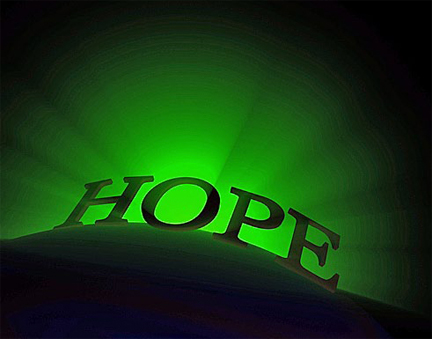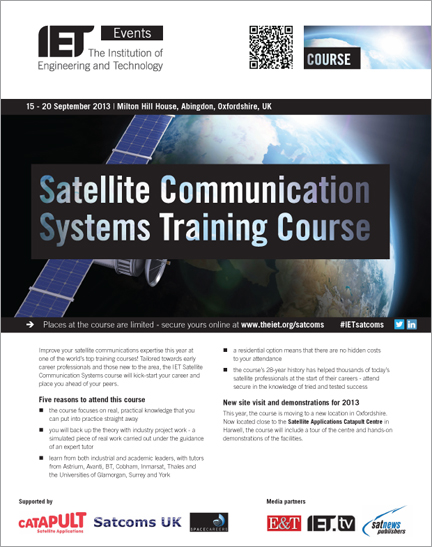It’s a well-known mantra of strategic planners, “hope is not a strategy.” I think anyone responsible for making a payroll, keeping the factory doors open, or accountable for achieving a mission, knows this.

No matter what your hopes are, it is your intentions, plans and actions that determine the outcomes.
That having been said, I still believe that hope is fundamental to success. If you’ve given up hope in what you’re doing, all the planning in the world is probably not going to help you.
Hope is a powerful and useful ally. It is an expression of the best that you desire, the most that you are willing to work for, the good end that you, and others, are willing to sacrifice for.
Our hopes define the best expectations that we are willing to strive for, and the goodness we are willing to see in others. Our hopes are intimate and personal, and they are broad, unselfish and global.
To hope is to be human. To be without hope is to be something less. To give, create and inspire hope - that, surely, is divine. Not the “Flying Spaghetti Monster” kind of divine, but, rather, that special kind of divine that lives within us all.
What set me thinking about the importance of hope were two events, not quite a week apart, and both commonplace enough.
On May 17, along with tens of thousands of others, I snuck off to the theater, plunked down my $22 for a ticket and popcorn, and was part of the opening weekend for Star Trek: Into Darkness. While the much anticipated J.J. Abrams opus certainly deserves some mention in the context of hope, what really struck me was the utter hopelessness and despair that seems to run like cold, infected blood as a common theme in so much science fiction fare these days. The trailers that preceded Star Trek included:
World War Z: starring Brad Pitt, an apocalyptic, end-of-times bummer that proceeds from the notion that, for most of us, all hope is lost. It is being enthusiastically touted as the most expensive disaster film of all time.
Elysium: starring Matt Damon, offers us a depressing vision of Earth as a hell hole populated by the dregs of humanity, a planet abandoned by haughty, uncaring elites living just beyond reach on the Eden-like space station, Elysium.
Ender’s Game: featuring Harrison Ford as a man who would make weapons of children in order to save a doomed Earth from alien invaders.
If these weren’t enough variations on the theme, Oblivion, the cheerily titled current Tom Cruise vehicle, was playing in the next auditorium.
And, if none of those were adequately depressing, the post-apocalyptic SyFy channel original series Defiance has just made the leap to on-demand viewing on television.
These dim, cynical, ugly views of our future go well beyond the time-honored tradition of science fiction as cautionary folklore. They are despairing tomes of pornographic violence that seem to serve as video game opiates for spectators too lazy to pick up the game controller and simulate killing for themselves.
Poetic warnings that we could be screwing up the future have always been valid creative approaches for the genre, but this is not the thought-provoking high ground of Soylent Green or Logan’s Run. This is in-your-face ugly. Hopelessness as muse.
Which takes us back to Star Trek: Into Darkness, which should have been entitled Star Trek: Out of Darkness. Without dropping a bunch of spoilers, suffice it to say that, true to the vision of the franchise that has characterized its finest moment for 47 years, this movie is about the triumph of good over evil, and the importance of things like friendship, valor, and honor. And the sum of the struggle of all its characters is the consummate hopeful expression that mankind can, and will, boldly go into the future.
At a Denver meeting a few days later, Denver Metro Chamber of Commerce boss Tom Clark casually admitted that he was a man of hope, because he had been a child of the sixties, inspired by President John F. Kennedy’s challenge to the nation to land a man on the moon. It was a great comment to make, because we were discussing the future.
The venerable Denver Chamber is one of the oldest in the nation, approaching its 150th anniversary. To the great credit of the organization, the chamber is considering what role it can plan in the next 150 years - certainly a hopeful optimism that inspires informed and constructive collective action.
Consideration of the power and impact of the JFK “moment in time” often sparks discussion of the relative roles of inspiration, hope and leadership in moving the nation forward. I think that most of us who lived through the Apollo experience are profoundly convinced that visionary leadership makes a difference. There’s a sense that we haven’t seen the nation energized by science, technology and industry, in an “Apollo” way, for half a century.
That’s probably fair. But it says something important that, five decades later, we still hope to see humanity marshal another bold and purposeful foray into space. Our ability to muster something vaguely resembling a political mandate may seem irretrievably broken, but hope, as they say, springs eternal.
Curiosity would never have landed on Mars without it.
Hope, of course, wasn’t JPL’s strategy for Curiosity. But, it you watched the video of NASA’s mission controllers as they awaited confirmation that the spacecraft had survived its landing, you know that hope was the “12th man” on the mission. Hope was there when Shepard launched, hope was there when the Eagle landed, hope was there when Apollo 13 informed Houston that there was a problem.
This is the problem I have with an entertainment industry that tells us that, in the future, hope dies.
It does not.
It is the problem I have with political leaders who say we will never be able to afford a great space program again.
We will. We can. We must.
While hope is not a strategy, it must always be our co-pilot.
“We must accept finite disappointment, but never lose infinite hope.”—Martin Luther King, Jr.

About the author
Named chief executive officer of the Space Foundation in 2001, Elliot Pulham leads a premier team of space and education professionals providing services to educators and students, government officials, news media and the space industry around the world. Before joining the Space Foundation, he was senior manager of public relations, employee communication and advertising for all space programs of Boeing, serving as spokesperson at the Kennedy Space Center for the Magellan, Galileo and Ulysses interplanetary missions, among others. He is a recipient of the coveted Silver Anvil Award from the Public Relations Society of America - the profession’s highest honor. In 2003, the Rotary National Awards for Space Achievement Foundation presented him with the coveted Space Communicator Award, an honor he shares with the late legendary CBS News Anchor Walter Cronkite and former CNN News Anchor Miles O’Brien. Pulham is chairman of the Hawaii Aerospace Advisory Committee, a former Air Force Civic Leader and advisor to the Chief of Staff and Secretary of the Air Force and a recipient of the U.S. Air Force Distinguished Public Service Medal. He serves on the editorial board of New Space Journal.


